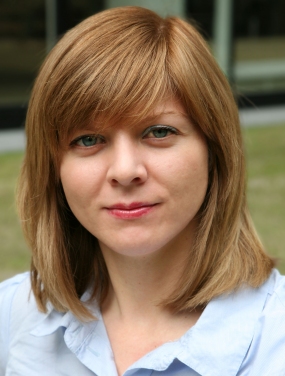Agnieszka Grabowska, PhD
Scientific CV
2010 - 2014
Postdoctoral Scientist, Junior Research Group Immunotherapy and Immunoprevention, DKFZ, Heidelberg
2009 - 2010
Postdoctoral Scientist and Project Leader, Okairos / Ceinge - Biotecnologie Avanzate s.c. a r.l., Naples, Italy
2007
Visiting Scientist, Friedrich-Löffler Institute, Federal Research Institute for Animal Health, Institute of Immunology, Tübingen, Germany
2002 - 2009
PhD student at the Department of Molecular Virology at the Intercollegiate Faculty of Biotechnology , Gdansk, Poland
1997 - 2002
Studies of Biology at the University of Gdansk, Poland
Research Project
Identification of promiscuous HLA class II-restricted human papillomavirus type 16 E2-, E5-, E6- and E7-derived CD4+ helper T cell epitopes for therapeutic vaccine design
Human papillomavirus (HPV)-specific CD4+ T cell responses were found to play a crucial role in the clearance of HPV-induced malignant lesions. Up to now, therapeutic anti-HPV vaccines have mostly been developed to elicit CD8+T cell responses. HPV T cell epitopes have mostly been determined by indirect methods and for the most prevalent HLA-type, HLA-A2. However, the exclusive targeting of HLA class I-restricted HPV epitopes might not be sufficient, since HLA class I alleles may be downregulated in HPV-induced lesions. Therefore, detailed knowledge about naturally processed HLA class II-restricted HPV epitopes could complement future vaccine design strategies.
Resulting Publications
ERAP1 overexpression in HPV-induced malignancies: a possible novel immune evasion mechanism.
Steinbach A, Winter J, Reuschenbach M, Blatnik R, Klevenz A, Bertrand M, Hoppe S, von Knebel Doeberitz M, Grabowska AK, Riemer AB.
OncoImmunology 2017, 6(7): e1336594.
Identification of promiscuous HPV16-derived T helper cell epitopes for therapeutic HPV vaccine design.
Grabowska AK, Kaufmann AM, Riemer AB.
International Journal of Cancer 2015, 136(1): 212-24.
Therapeutic vaccine strategies against HPV.
Khallouf H, Grabowska AK, Riemer AB.
Vaccines 2014, 2(2): 422-462.
A vaccine targeting mutant IDH1 induces antitumor immunity.
Schumacher T, Bunse L, Sahm F, Pusch S, Quandt J, Wiestler B, Oezen I, Menn O, Osswald M, Grabowska AK, Eichmueller S, Riemer AB, Friese M, Beckhove P, von Deimling A, Wick W, Ott M, Keil M, Balss J, Rauschenbach K, Vogler I, Diekmann J, Sahin U, Stevanovic S, Trautwein N, Okun J, Platten M.
Nature 2014, 512(7514): 324-7.
The invisible enemy – how human papillomaviruses avoid recognition and clearance by the host immune system.
Grabowska AK & Riemer AB.
Open Virology Journal 2012, 6: 249-56.

